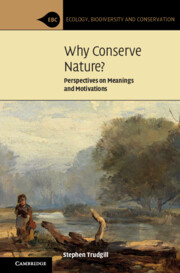Bibliography
Published online by Cambridge University Press: 03 February 2022
Summary

- Type
- Chapter
- Information
- Why Conserve Nature?Perspectives on Meanings and Motivations, pp. 351 - 388Publisher: Cambridge University PressPrint publication year: 2022



